Search the Special Collections and Archives Portal
Search Results

Photograph of the entrance and marquee of Wilbur Clark's Desert Inn (Las Vegas), 1950s
Date
Archival Collection
Description
Daytime view of the front exterior entrance to Wilbur Clark's Desert Inn. Frankie Laine headlines the sign on the lawn in front of the parking lot.
Site Name: Desert Inn
Address: 3045 Las Vegas Boulevard South
Image
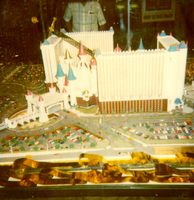
Photograph of a scale model of the Excalibur Hotel and Casino (Las Vegas), circa 1989
Date
Archival Collection
Description
Scale model of the proposed Excalibur Hotel and Casino as seen from the north.
Site Name: Excalibur Hotel and Casino
Address: 3850 Las Vegas Boulevard South, Las Vegas, NV
Image
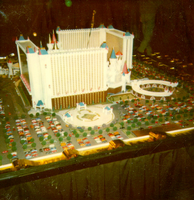
Photograph of the Las Vegas Blvd. side of a scale model of the Excalibur Hotel and Casino (Las Vegas), circa 1989
Date
Archival Collection
Description
Scale model of the proposed Excalibur Hotel and Casino as seen from the east.
Site Name: Excalibur Hotel and Casino
Address: 3850 Las Vegas Boulevard South, Las Vegas, NV
Image
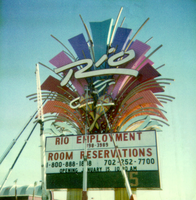
Photograph of construction of the neon sign of the Rio Hotel and Casino (Las Vegas), 1989
Date
Archival Collection
Description
Construction on the neon sign in front of the Rio Hotel and Casino. The sign gives employment and reservation phone numbers and announces the opening date of January 15 (1990).
Site Name: Rio All Suite Hotel and Casino
Address: 3700 West Flamingo Road, Las Vegas, NV
Image
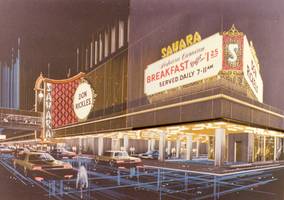
Photograph of an artist's rendering of the exterior corner of the Sahara Hotel and Casino (Las Vegas), circa 1970s
Date
Archival Collection
Description
Artist's conception of proposed facade changes to the Sahara.
Site Name: Sahara Hotel and Casino
Address: 2535 Las Vegas Boulevard South
Image
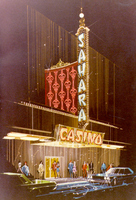
Photograph of Googie architectural design drawing of the entrance to the Sahara Hotel and Casino (Las Vegas), circa 1970s
Date
Archival Collection
Description
Artist's conception of proposed façade changes to the Sahara.
Site Name: Sahara Hotel and Casino
Address: 2535 Las Vegas Boulevard South
Image
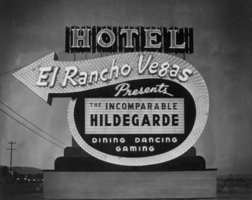
Photograph of the electric and neon sign for the El Rancho Vegas (Las Vegas), 1941
Date
Archival Collection
Description
The original El Rancho Vegas sign. Cabaret singer Hildegarde is featured on the sign.
Site Name: El Rancho Vegas
Address: 2500 Las Vegas Boulevard South
Image
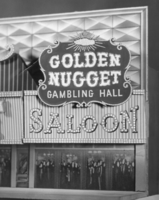
Photograph of a scale model detail of a saloon entrance to the Golden Nugget Gambling Hall (Las Vegas), 1958
Date
Archival Collection
Description
Detail of the Golden Nugget model showing the saloon entrance.
Site Name: Golden Nugget Las Vegas
Address: 129 East Fremont Street
Image
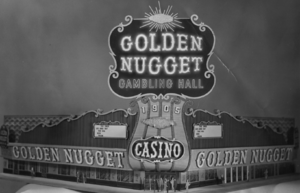
Photograph of a scale model of the Golden Nugget Gambling Hall (Las Vegas), 1958
Date
Archival Collection
Description
Scale model of the Golden Nugget Gambling Hall as seen from the corner of Fremont and Second Streets.
Site Name: Golden Nugget Las Vegas
Address: 129 East Fremont Street
Image
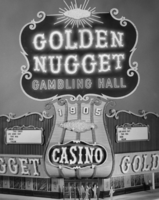
Photograph of a detail of a scale model of the Golden Nugget Gambling Hall (Las Vegas), 1958
Date
Archival Collection
Description
Detail of a scale model of the Golden Nugget Gambling Hall as seen from the corner of Fremont and Second Streets.
Site Name: Golden Nugget Las Vegas
Address: 129 East Fremont Street
Image
